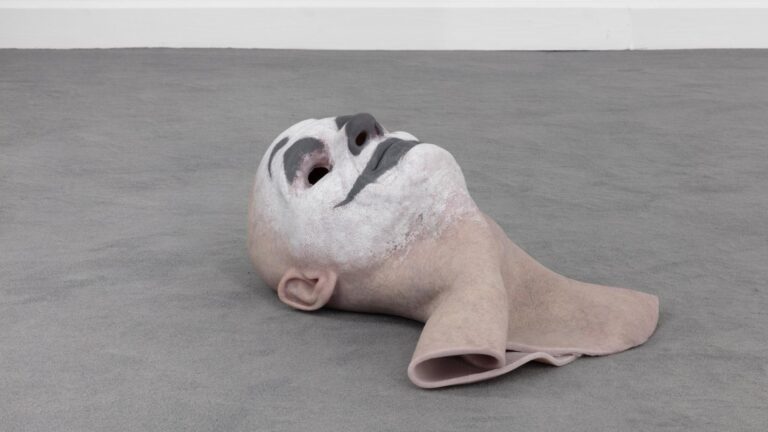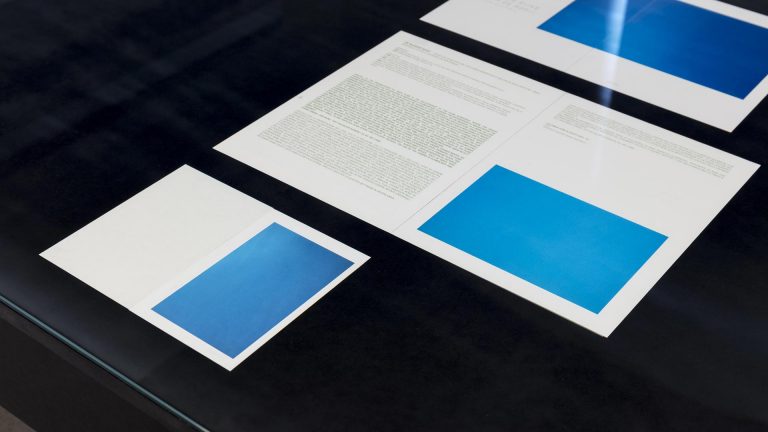In 1987, Ludger Gerdes realized his first large site-specific work for public space with Schiff für Münster as part of the Skulptur Projekte. Schiff für Münster is an island in the shape of a ship, constructed from bricks, surrounded by a moat and covered with grass. An architectural construction consisting of wooden columns is located to its stern, which is shaded by two poplar trees in the middle of the island. The installation is sited outside Münster city centre, on its border to the surrounding rural area. The ship is reminiscent of the barges on the Dortmund-Ems Canal. Gerdes uses narrative imagery to place his art in a tangible context with the world. In 2024, Ludger Gerdes would have turned 70 and the Kunsthalle would like to take this as an opportunity to focus on his work and contextualize it with an exhibition at the Stadthausgalerie.
Ludger Gerdes was a versatile practitioner: painter, sculptor and photographer, but also writer and theorist. He turned to these media episodically to develop his enduring aesthetic and philosophical investigation into the possibilities of artistic autonomy in public space. While studying at the Düsseldorf Academy in the early 1980s, Gerdes befriended a group of artists who shared an interest in sculpture, architecture and model making. Thomas Schütte, Reinhard Mucha, Wolfgang Luy and Harald Klingelhöller belonged to this group, which became known as the Modellbauer. Gerdes was instrumental in the intellectual direction of the group and wrote extensively about their work in the context of utopian political philosophy, aesthetics and architecture. For Gerdes, the model was not just a question of scale, but a source of critical thinking. His idea of the thought model provided a framework for artistic creation in the form of a sketch, a plan or a text; a working hypothesis that could be elaborated “sometimes seriously, sometimes ironically” in a variety of visual and sculptural ways.
By bringing together sculptures and paintings that Gerdes created in the 1980s with one of the artist’s most ambitious works from the 1990s, the photographic series Public Space – Private View, a further insight into the artist’s work is provided. His photographic study of urban and rural environments, which considers the role of art beyond the institutions and target groups that normally structure it, seems particularly important in the context of the Public Collection, not least for the contextualization of his Schiff für Münster.
Ludger Gerdes (1954-2008) began his studies at the Kunstakademie Münster (class of Timm Ulrichs and Lothar Baumgarten) and switched to the class of Gerhard Richter at the Kunstakademie Düsseldorf a few years later. In 1983 he received a scholarship from the Kunstfonds and was awarded the Ars Viva Prize of the Kulturkreis im BDI and the Sprengel Prize for Fine Arts Hanover, among others. After teaching at the Städelschule in Frankfurt and the HFG Karlsruhe, he taught as a professor of painting at the Muthesius University in Kiel.
Curators: Matthew Hanson + Merle Radtke
The exhibition is realized in close collaboration with the Künstler:innenarchiv der Stiftung Kunstfonds. The Artists’ Archive was founded in 2010 as a model project for dealing with artistic estates of both living and deceased artists. At the same time, concepts for an art heritage of the future are being developed, tried out and discussed in the archive.




















